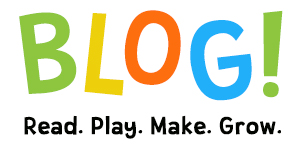-
September Take-and-Make Kits
Bring home a fun new project! You can now register to pick up a Take-and-Make Kit from the Youth Services desk or through Parking Lot Pickup. Here are the instructions for each kit:
Toddlers and Preschoolers: Spray and Drip Painting

Materials provided for Spray and Drip Painting:
● Watercolor paper (3)
● Spray bottles filled with liquid watercolor paint (3)
● Pipettes (3)
● Empty plastic containers (3)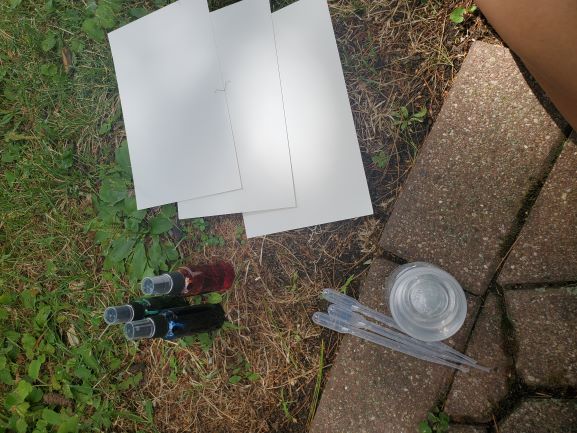
Spray (Bottle) Painting: help strengthen grip and control while having fun spray painting with a
spray bottle!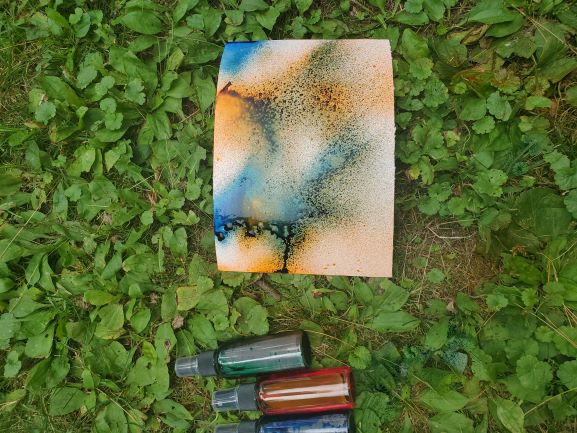
Directions:
● Arrange the watercolor paper in an area that you envision best for this activity- We
highly recommend somewhere outdoors! (Outside on the grass, thumbtacked to a tree,
clipped to an art easel).
● Provide your child with the prefilled squirt bottles and let them go to town!
● You will need to allow this to dry. We recommend leaving it in grass and placing rocks
around the edges to avoid it blowing away.
Drip Painting: Using pipettes is a great way to strengthen fine motor skills and help get little
hands ready for writing.
Directions:
● To use the pipettes, pour some of the liquid paint (found in the squirt bottles) into the
plastic cups.
● Squeeze pipette, place squeezed pipette in paint cup, release finger grip to suck up paint
● Squeeze pipette over paper to release paint.
Extras!
Looking to turn this into an educational activity?
- Add letters or numbers for your child to spray or drip on as you call them out. This
activity would be great for letter recognition, letter sounds, hand grip, fine motor
control, and following directions.
*Adding water to the liquid watercolor paint will give you more paint but less vibrant colors.Grades K-2: Tissue Paper Painting
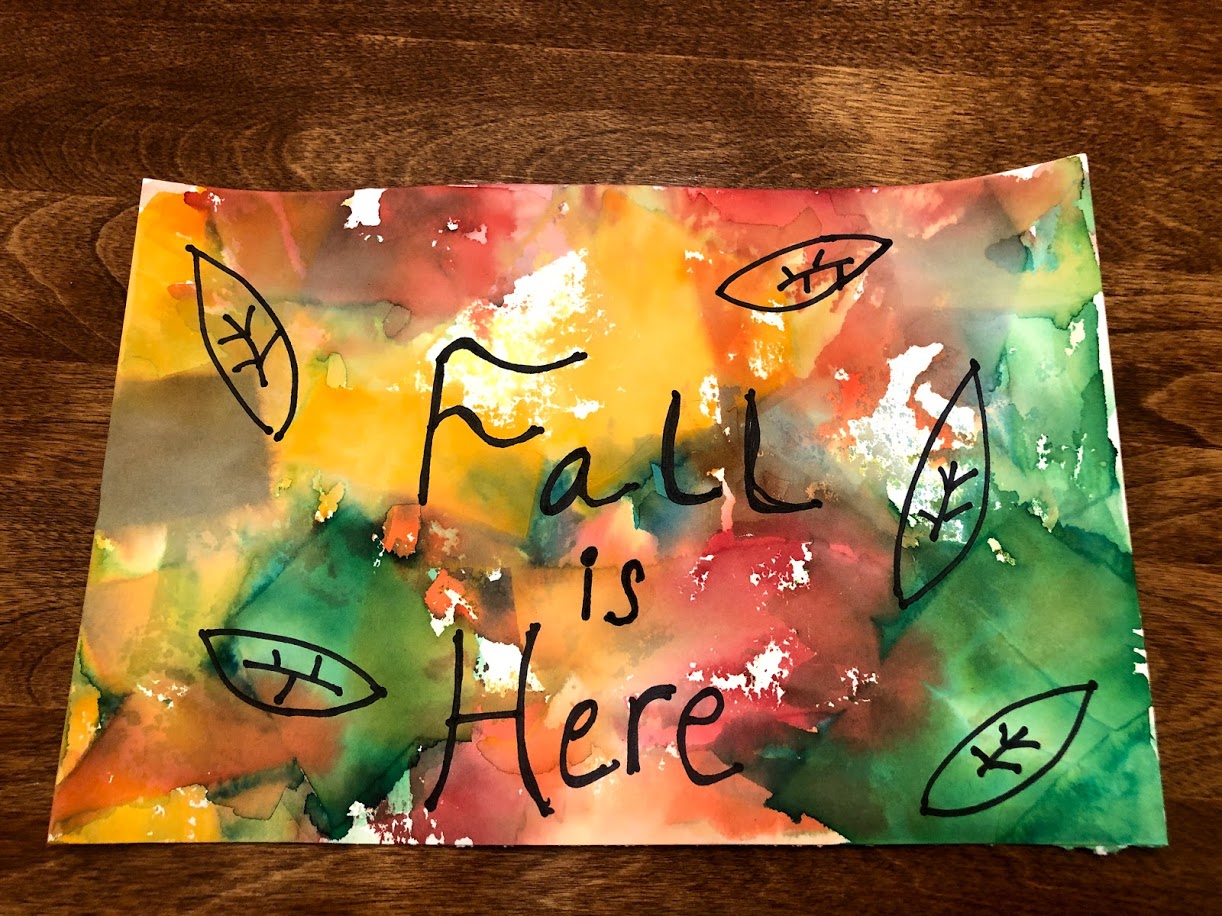
Things you will need in addition to the items in the kit:
-cup of water
-scissors
Directions:
1. Take the items out of the box.
2. Cut the colored tissue paper into smaller shapes. A variety of sizes and shapes will make your artwork more interesting!
3. Arrange your tissue paper shapes onto one of the white watercolor papers.
4. Use your paintbrush to apply water all over the tissue paper. Make sure to get everything nice and wet so the colors bleed through.
5. Wait for the paper to dry.
6. Remove the now dry tissue paper from the watercolor paper and discard.
7. Enjoy your watercolor masterpiece as is or...
8. Use the watercolor art as a background for more art with your black permanent marker!
Grades 3-8: Kindness Rocks

1. Take your rocks, markers, mandala stencils, and phrases out of the box.
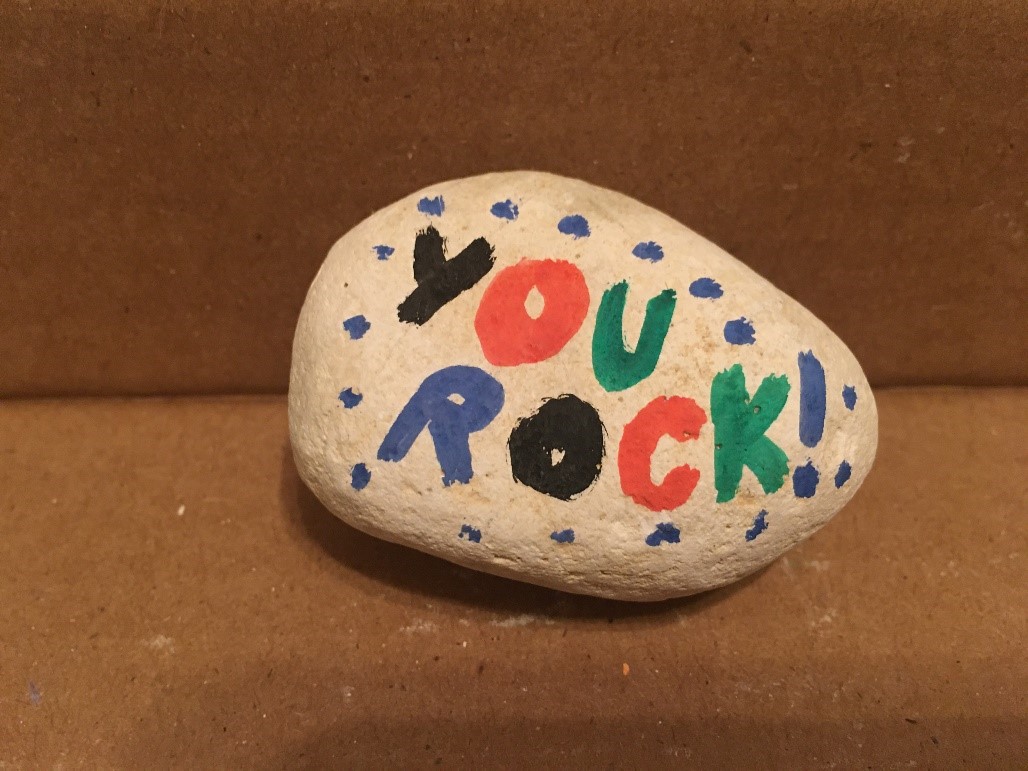
2. Take some inspiration from the phrases sheet and use the markers to write something nice to a loved one…
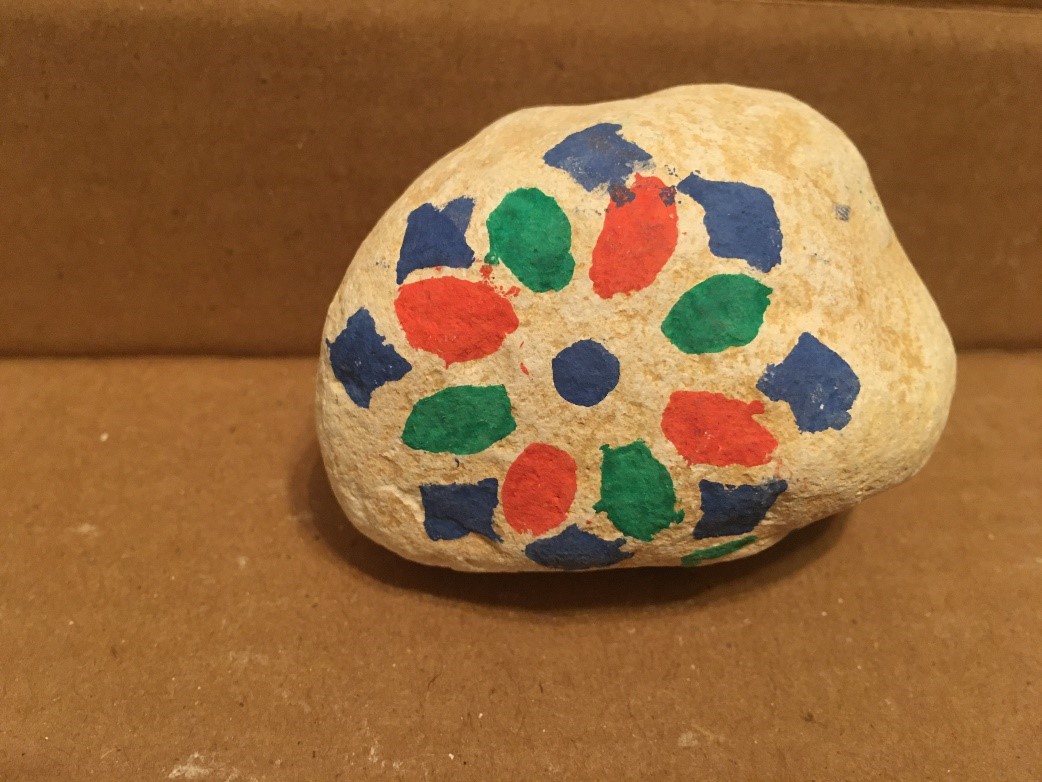
3. …use the mandala stencils to make a calming design…
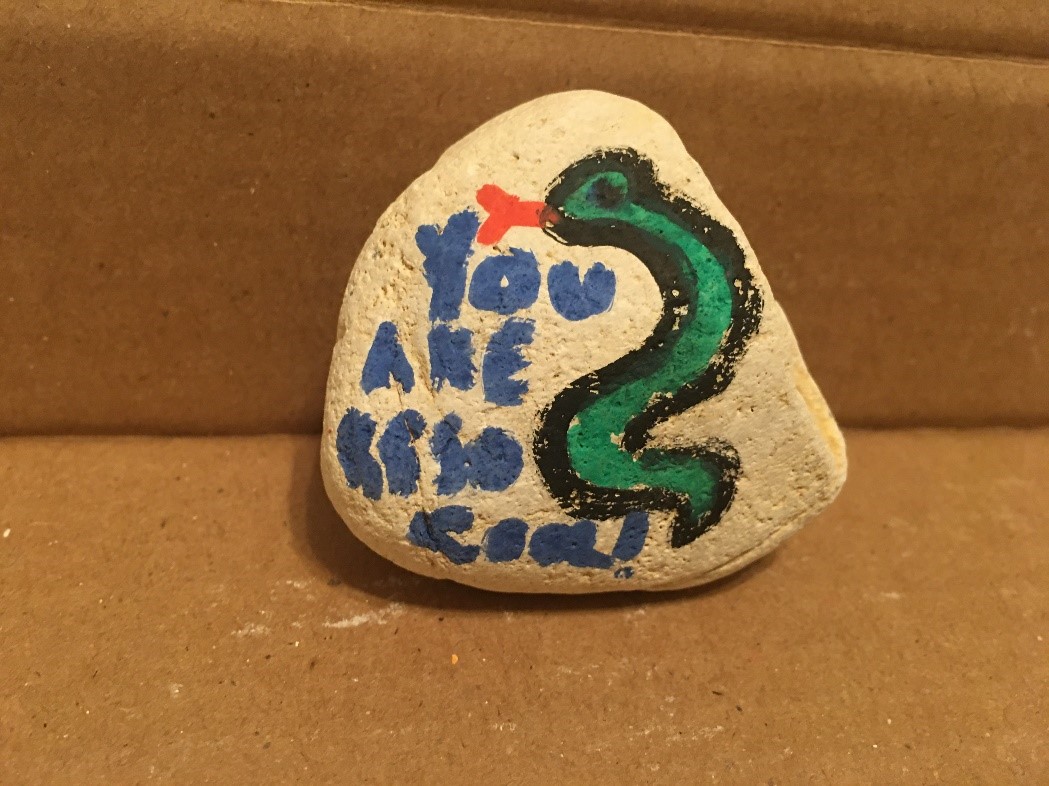
4. …or just draw something silly and sweet to give to a pal.

5. There’s only one rule for making kindness rocks: do it with kindness!
6. Once you’ve made a kindness rock, give it to someone you care about.
 Youth Services Assistant Librarian Alyssa
Youth Services Assistant Librarian Alyssa -
August Take-and-Make Kits
Bring home a fun new project! You can now register to pick up a Take-and-Make Kitfrom the Youth Services desk or through Parking Lot Pickup. Here are the instructions for each kit:
Toddlers and Preschoolers: Chenille Stick Weaving
Young children work on fine motor skills and create a unique piece of three-dimensional art. Toddlers will want to master this new process. When you’re done, take it apart and make something new!
Inside the Toddler/PreK Box:
1 plastic canvas
10 chenille sticks
Bonus activity for older preschoolers - 1 craft paper bag w/ blunt plastic needle and yarn for simple sewing
Chenille Stick Weaving:
1. Take hold of a chenille stick and push it through one of the small holes in the plastic mesh.
2. Pull it through from the other side – a little or a lot, it’s up to you!
3. Take the same end and weave it back through the plastic sheeting.
4. Do this several times with each stick.


Simple Sewing (for older Preschoolers)
Preschoolers work on hand strength and fine motor skills, while exploring the basics of sewing.
1. Thread your plastic need with yarn.
2. Push the needle through one side of the plastic canvas and pull until the yarn is partially through.
3. Pull the needle through another hole, in the opposite direct.
4. Experiment with making lines and shapes, or simply enjoy pulling the needle through the mesh.

Grades K-2: Postcards
Let everyone know what a great summer you've had with a fun, personalized postcard!
Make a Postcard:
1. Take your postcard, stamp, markers, and sticker bag out of the box.
2. Decorate your card with stickers…
3. …or draw something cool with your markers (or both!)
4. Write a nice message to someone you care about on the back…
5. …and make sure you write down their address and stick on a stamp, too!
6. Now you can mail your postcard (make sure a grown up helps you with this part)!
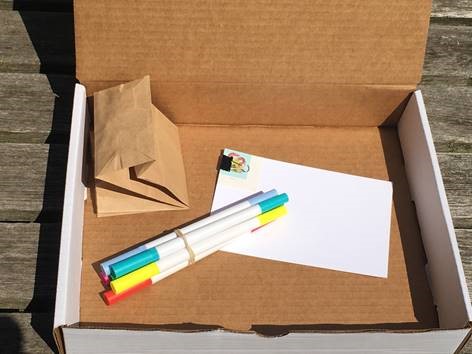
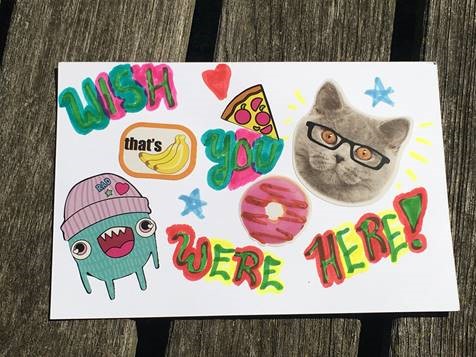

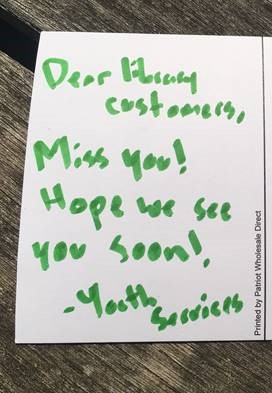
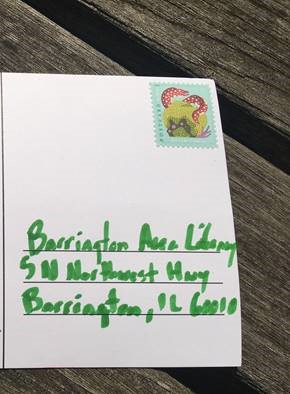
Grades 3-8: Ombre Dip Dye
Lower fabric gradually into a dye bath to create a cool textile effect: gradual layers of lighter and darker color.
In addition to the Take-and-Make Kit, you will need:
A plastic tarp or large garbage bag
A plastic container for the dye, big enough to hold the entire bandana, but less than 12 inches wide on one side. (You could line the Take-and-Make box with a plastic bag and use that!)
A disposable plastic bag
Water - between 2 and 3 cups should do it
Paper towels to catch spills
Some stackable items - boxes, cans, etc. These should be around 4-6 inches high, about the same size & shape, and you might get dye on them! I went with 4 tissue boxes.
Ombre Dip Dye:
1. Lay out the tarp or large trash bag to protect your work surface. Doing this outside is a great idea!
2. Place your container on the tarp, then create two stacked towers around the container, around 18-20 inches tall. The dowel rod will sit on top of the stacks, and the bandana will hang into the container.
3. Use the binder clips to attach one side of the bandana to the dowel rod. Set aside.
4. Put on the gloves, then add water to the top line of the dye bottle. Shake, then pour into the container. Add some more water, until there's just enough liquid so the bandana will rest in the liquid. (This will depend on the size of your container.)
5. Carefully set the dowel rod on top of the stacks, making sure the bottom edge of the bandana is getting wet.
6. Wait about 3 minutes, then carefully add 2-3 more bottles of water to the container (to dilute the dye). Holding the dowel rod in one hand, carefully remove the topmost blocks from the stack, and rest the dowel rod on the lower levels. Once again, make sure the fabric is hanging in the liquid.
7. Wait another 3 minutes. Continue in this way, diluting the dye bath and lowering the rod, until there are just a few inches of fabric not dyed.
8. Get the plastic bag ready, laying it open next to the dye bath. Carefully raise the dowel rod, allowing the drips to fall into the bath for a few moments, and then gently wring out the fabric with your gloved hand, making sure not to touch the topmost part of the bandana.
9. Place the bandana in the plastic bag, keeping the dowel rod at the top of the bag, and bring it to a sink.
10. Leaving the dowel rod attached, carefully rinse out the bandana, allowing the water to move from the top to bottom. Keep rinsing until the liquid runs clear.
11. Remove the dowel rod and wash the bandana in your washing machine, alone, on cold settings. You can dry it in the dryer, or let it air dry.
 Youth Services Assistant Librarian Alyssa
Youth Services Assistant Librarian Alyssa -
Take-And-Make Kits at the Library
You can now register to pick up a Take-and-Make Kit during the Barrington Area Library’s Parking Lot Pickup hours, bringing a fun new art project home to explore. Here are instructions for each kit:
Toddlers & Preschoolers: Contact Paper Stained Glass and Nature Art
Contact Paper Stained Glass
- Cut out different colored shapes from the cello paper.
- Remove the backing from the contact paper, carefully setting the sheet down sticky-side up.
- Press the cello paper down onto the sticky contact paper.
- Display your artwork in a window, letting the light shine through.
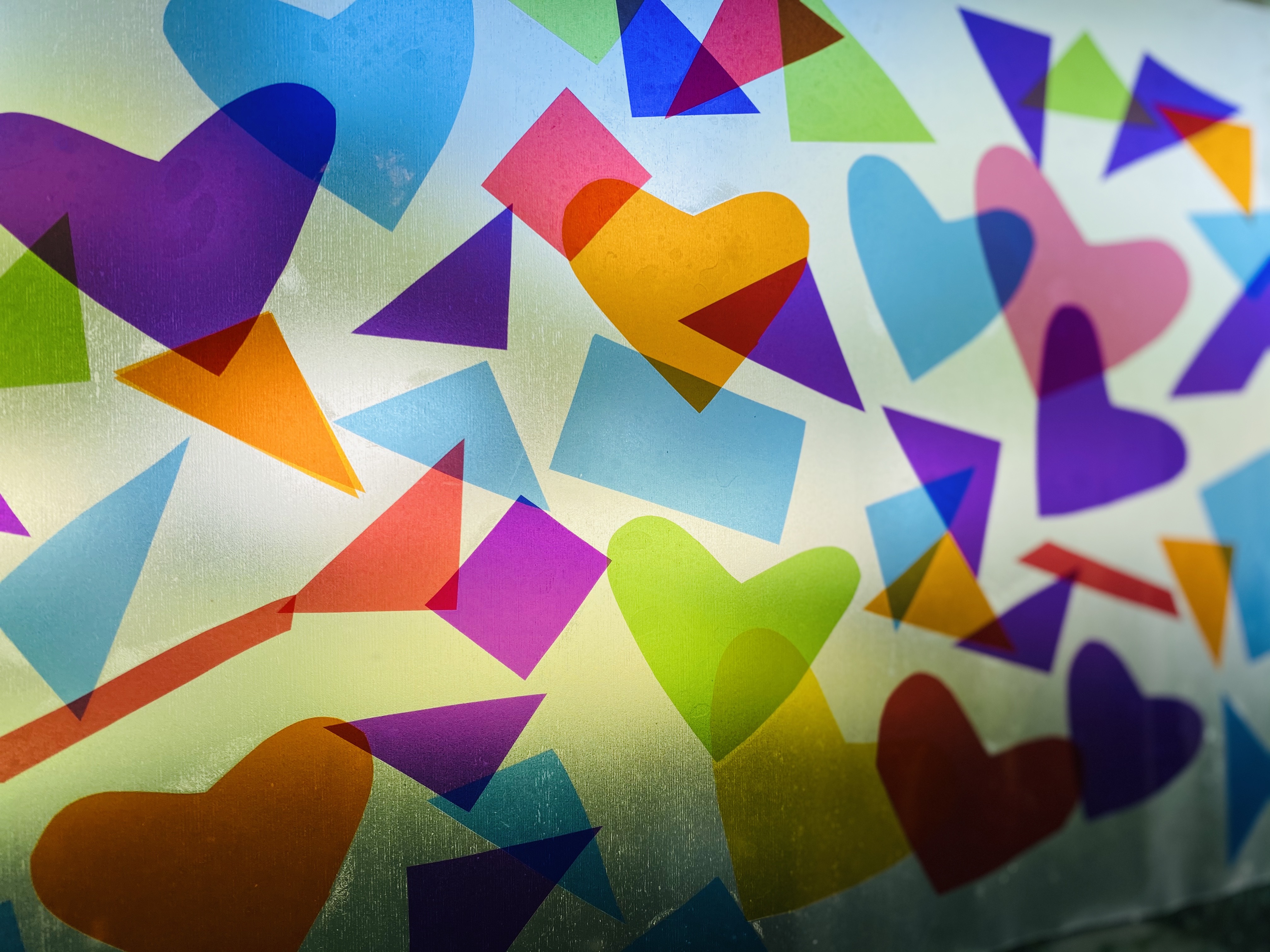
Contact Paper Nature Art
- Go outside, gathering up small leaves, sticks, and flowers.
- Remove the backing from the contact paper, carefully setting the sheet down sticky-side up.
- Press the objects from nature down onto the sticky contact paper.
- Feel free to add any other materials from your own supplies.
- Display your artwork!
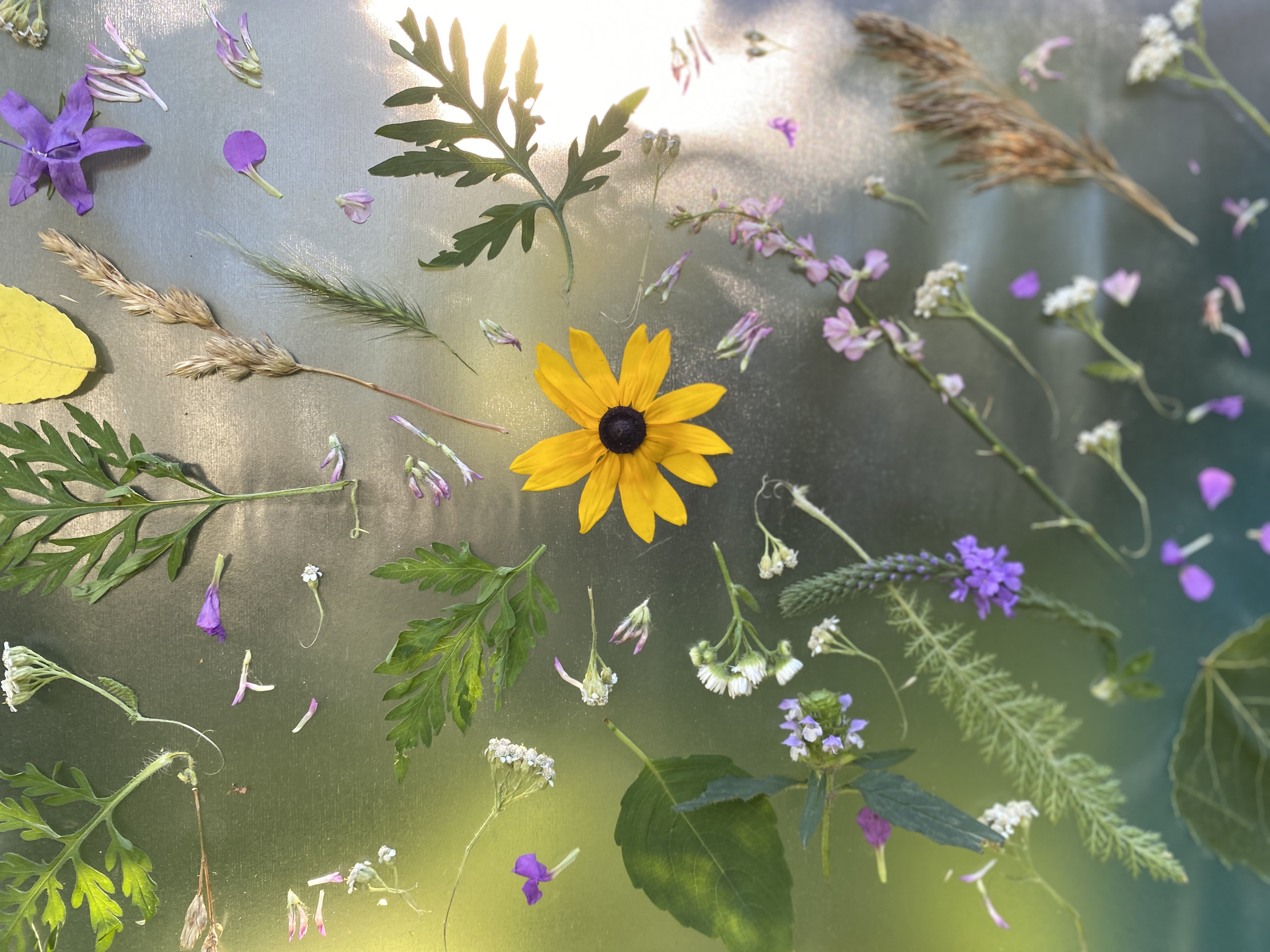
Grades K-2: Sidewalk Stained Glass
Turn your sidewalk or driveway into a work of art, while having fun in the sun.
- Find a square of sidewalk or driveway, or make a large square or rectangle out of tape.
- Stretch and stick a piece of painter’s tape, any size, across the space in any direction.
Stick another line of painter’s tape in a different direction. - Keep going to create different geometric shapes.
- Once your square of sidewalk is broken up with a good number of lines, start coloring in the shapes with sidewalk chalk.
- Use one color for each space.
- Once all the visible pavement is colored over, pull off the painter’s tape.
Grades 3-8: Sun Prints
Use the power of the sun and objects from nature to create beautiful designs.
- Find some objects you’d like to print - leaves, flowers, rocks, or anything you’d like to use to make a print.
- Once you are ready with your objects, remove the blue sun-printing paper from the manila envelope.
- Place the paper in the sun, and then immediately place your chosen objects on the paper.
- Allow to sit in the sun until the sun-printing paper turns very pale blue, about 2 minutes.
- Remove the objects from the paper, and quickly remove the paper from the light.
- Immediately soak the paper in a container of plain tap water for about 1 minute.
- Dry flat.
 Youth Services Librarian Allison
Youth Services Librarian Allison
Page 2 of 2

